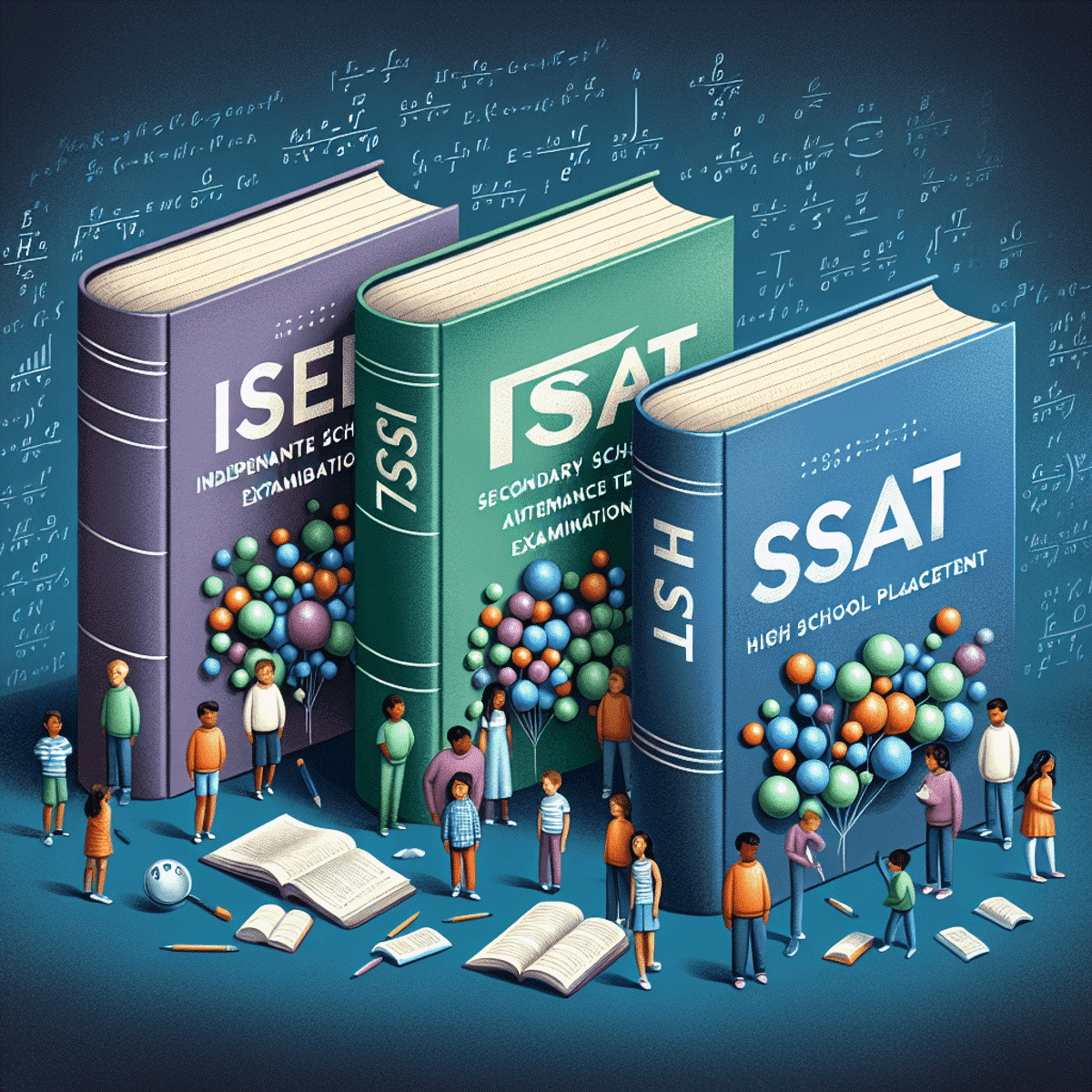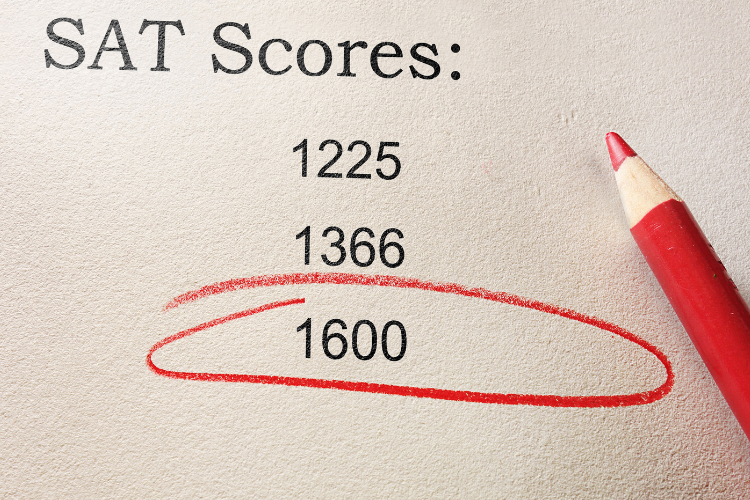


Understanding private school entrance exams can be overwhelming for parents who want to secure a place for their child in a prestigious school for their education. These tests are an important part of the admissions process, as explained in A Parent’s Guide to Private School Entrance Exams, and they measure students’ academic abilities in a standardized way.
It’s essential for parents to know about key exams like the ISEE (Independent School Entrance Examination), SSAT (Secondary School Admission Test), and HSPT (High School Placement Test). Each exam is designed for different educational levels and has specific requirements set by schools. Therefore, it’s crucial to understand which test aligns with your child’s target schools.
Private school admissions are highly competitive, and standardized testing is a major component used by schools to evaluate applicants. These tests offer a uniform criterion by which educational institutions can compare applicants from diverse backgrounds. However, they are just one piece of the puzzle in the admissions landscape.
Choosing private education often means benefiting from smaller class sizes and personalized attention from teachers. This environment supports academic challenges and fosters individual growth, making the journey through preparing for entrance exams a worthwhile endeavor. At 4Kids.com, we provide resources and insights to help parents navigate this complex process with confidence.

Private school entrance exams are crucial in assessing the academic abilities of applicants seeking admission into prestigious educational institutions. These standardized tests, such as the Independent School Entrance Exam (ISEE), Secondary School Admissions Test (SSAT), and High School Placement Test (HSPT), serve as benchmarks for evaluating a student’s readiness for advanced academic challenges.
Here’s a brief overview of some of the most common entrance exams used by private schools:
Purpose: Primarily used by independent and private schools to assess a child’s verbal and quantitative reasoning, reading comprehension, and mathematics skills.
Target Grade Levels: Students entering grades 2 through 12.
Purpose: Designed to measure the basic verbal, math, and reading skills necessary for success in independent schools.
Target Grade Levels: Students applying for grades 3 through 11.
Purpose: Frequently required by Catholic high schools to evaluate students’ capabilities in areas such as mathematics, reading, language skills, and science.
Target Grade Levels: Typically required for students entering grade 9.
Understanding the differences between the ISEE and SSAT can help parents make informed decisions about which exam their child should take:
The ISEE is divided into four sections: Verbal Reasoning, Quantitative Reasoning, Reading Comprehension, and Mathematics Achievement. It also includes an essay that is not scored but sent to the schools.
The SSAT comprises four sections: Quantitative (Math), Verbal, Reading Comprehension, and an unscored writing sample. It features different levels of complexity based on grade levels.
ISEE scores are broken down into four section scores without any penalty for incorrect answers.
SSAT uses a quarter-point penalty for wrong answers and combines math scores from two distinct quantitative sections.
The HSPT is structured to test several competencies crucial for high school success:
Mathematics: Covers arithmetic operations, algebraic concepts, geometry, and data interpretation.
Language Skills: Tests grammar usage, punctuation rules, spelling accuracy, and capitalization principles.
Reading: Focuses on comprehension abilities through passages that require analytical thinking.
Science: Evaluates understanding of fundamental scientific principles.
Understanding these exams equips parents with the knowledge needed to guide their children through the admissions process effectively. Explore more options and resources on 4Kids.com to support your child’s educational journey.
When exploring the world of private school entrance exams, it’s important to understand the differences in structure and scoring between the ISEE and SSAT. This knowledge will help you make informed decisions.
The ISEE consists of four multiple-choice sections:
Verbal Reasoning: Assesses vocabulary strength and reasoning ability.
Quantitative Reasoning: Evaluates mathematical thinking and problem-solving skills.
Reading Comprehension: Tests understanding of passages from various genres.
Mathematics Achievement: Focuses on mathematical skills learned in school.
In addition to these sections, there is an optional essay that is not scored but sent to schools as part of the application.
The SSAT also contains four multiple-choice sections:
Verbal Section: Similar to ISEE, it tests vocabulary and verbal logic.
Quantitative Section (two parts): Divides math questions into two separate sections.
Reading Comprehension: Involves passage-based questions to assess comprehension.
Instead of an essay, the SSAT features a writing sample, which is used by schools for admissions but not scored.
The scoring systems for ISEE and SSAT differ significantly:
ISEE: Students receive scores for each section, which are then converted into a scaled score. Percentile rankings compare a student’s performance with others taking the same test at a similar level. Notably, there is no penalty for incorrect answers.
SSAT: Each correct answer earns points, while incorrect answers incur a ¼ point penalty. Scores are converted into percentiles, allowing comparisons with peers; this penalization system can impact strategic guessing.
Deciding between these exams involves several considerations:
Availability of Test Dates: The SSAT offers more frequent testing dates compared to the ISEE, providing greater scheduling flexibility.
Perceived Difficulty Level: Some families perceive the SSAT as more challenging due to its penalty for wrong answers, which can affect students who are less confident in their guesses.
Understanding these elements helps parents navigate the complexities of private school admissions, ensuring they choose the test that best aligns with their child’s strengths and schedule. At 4Kids.com, we’re committed to equipping you with valuable insights to guide your educational journey.

Private school admissions often embrace a holistic admissions approach, where test scores, though significant, are not the sole criteria. Schools aim to understand applicants as individuals, resulting in a multifaceted evaluation process that goes beyond mere numbers on a test.
Essays: These provide insight into a child’s personality, interests, and writing abilities. They allow students to express their unique perspectives and demonstrate critical thinking skills.
Interviews: Personal interviews offer schools the chance to assess interpersonal skills, enthusiasm for learning, and compatibility with the school’s culture. Through conversations, admissions committees gauge a student’s potential contribution to the school community.
Teacher Recommendations: Often required alongside entrance exams, these letters offer valuable third-party insights into a student’s academic capabilities and character.
While entrance exam results play an important role in this process, they represent only one piece of the puzzle. Schools strive for balanced assessments by considering how each element reflects an applicant’s readiness for their rigorous academic environment. Recognizing this nuanced approach helps parents prepare their children effectively for multiple aspects of private school applications.
At 4Kids.com, we believe understanding this comprehensive process is essential for securing your child’s future in competitive private schools.
Getting a head start on test preparation for private schools can make a significant difference in your child’s performance. Early preparation allows students to familiarize themselves with the format and content of the exams, reducing anxiety and building confidence. Encourage a consistent study schedule that covers all necessary content areas, ensuring that your child has enough time to understand and master each section.
Selecting the right resources is crucial for an effective study plan. Consider incorporating the following into your child’s preparation strategy:
Reputable Prep Books: Choose books specifically tailored to the ISEE, SSAT, or HSPT exams. These often include practice tests, strategies, and tips aligned with each exam’s specific requirements.
Online Courses: Platforms like Test Innovators offer machine learning and AI-based practice tests that mirror official exams. These courses provide personalized feedback and track progress over time.
Tutoring Services: If additional support is needed, hiring a tutor who specializes in these entrance exams can provide individualized attention and guidance.
Study Groups: Encourage your child to join or form study groups with peers preparing for the same exams. This collaborative environment can foster motivation and create a supportive learning community.
By equipping your child with the right tools and strategies, you set them up for success in navigating the private school entrance exam landscape. The aim is not only to excel in these assessments but also to develop lifelong study habits that will benefit them throughout their academic journey.

Mastering test-taking skills is crucial for students aiming to excel in private school entrance exams. Effective strategies can significantly enhance performance, even when faced with challenging questions. Key techniques include:
Encourage students to allocate specific time limits per question or section, ensuring they have ample opportunity to address all parts of the test.
Teach students how to eliminate obviously incorrect answers, allowing them to make informed guesses rather than leaving questions unanswered.
While developing these skills is essential, addressing test anxiety is equally important. Many students experience stress that can hamper their performance. Understanding and managing this anxiety can lead to a more successful testing experience.
Fear of the unknown or unexpected questions
High expectations from self or others
Lack of preparation or confidence
Practice Regularly: Familiarizing students with the test format through regular practice can reduce anxiety by making the actual test environment feel less intimidating.
Relaxation Techniques: Breathing exercises or visualization can help calm nerves before and during the exam.
Positive Reinforcement: Encourage positive thinking and self-talk to build confidence.
By prioritizing both skill development and anxiety management, parents can help their children approach private school entrance exams with confidence and poise. At 4Kids.com, we provide resources and guidance to aid families in preparing for these pivotal assessments, ensuring every child has the opportunity to shine.
Understanding entrance exams is crucial for parents who want to help their children succeed in the competitive world of private school admissions. While these exams are an important part of the application process, it’s essential to remember that they are not the only factor that determines a child’s academic potential or their ability to thrive in a private school environment.
The key to success lies in preparation. With the right resources and strategies, families can approach this journey with confidence. At 4Kids.com, we believe that it’s equally important to focus on other aspects of the application, such as essays, interviews, and personal growth, alongside performing well on entrance exams.
By reading A Parent’s Guide to Private School Entrance Exams, you’re taking an active step towards securing your child’s educational future. This guide will provide you with valuable insights and information that will help you navigate the admissions process more effectively.
Remember, entrance exams are just one part of your child’s educational journey. There are many other exciting opportunities and experiences that await them in the world of learning.
Categories :
Tags :
Notifications